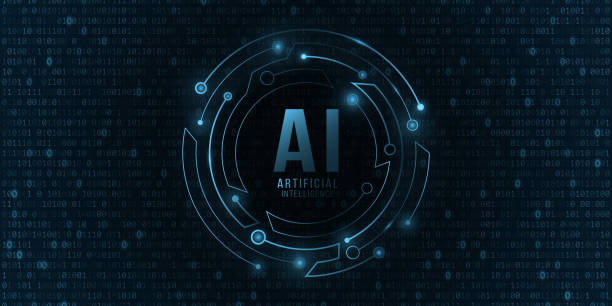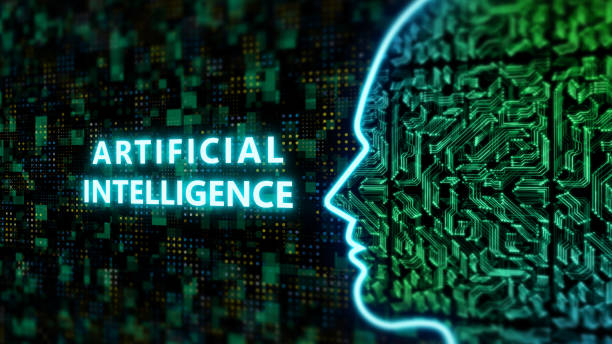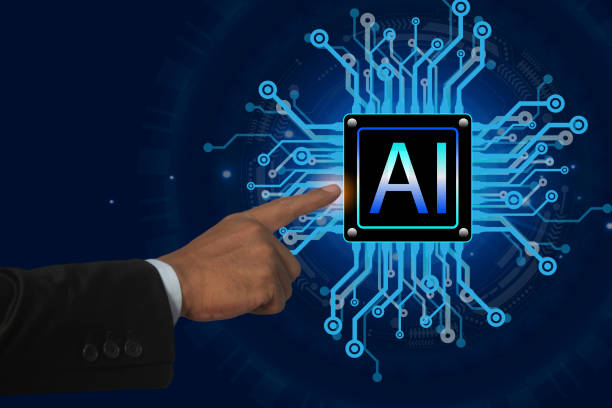Introduction to AI Assistants and Their Place in Modern Life
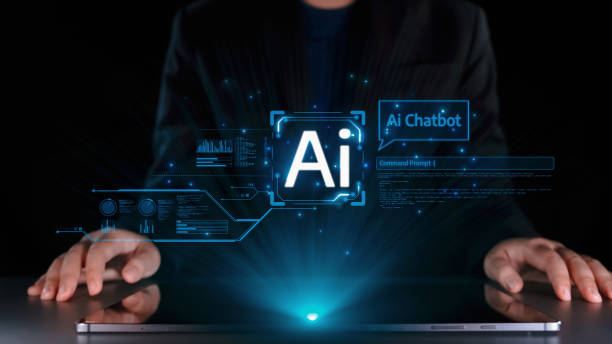
In today’s fast-paced world, the concepts of #technology and #artificial_intelligence are more intertwined with our daily lives than ever before.
Among the remarkable advancements in this field is the emergence and proliferation of AI assistants.
These intelligent tools, designed to facilitate human interaction with digital devices, have now become an inseparable part of smartphones, smart homes, and even cars.
An AI assistant, sometimes also called a smart helper, is essentially a computer program that can understand, process, and respond to voice or text commands.
These responses can include performing various tasks, providing information, or even communicating with other systems.
The applications of these assistants are vast; from setting reminders and playing music to answering complex questions and managing smart home devices.
In more detail, these assistants not only help simplify our lives but also enable us to accomplish more tasks in less time.
Their main goal is to create a more natural and intuitive user interface between humans and machines, such that using technology feels less like operating a machine and more like conversing with an intelligent entity.
These advancements have opened up new horizons in the field of human-technology interaction.
Don’t have a corporate website yet and missing out on online opportunities? With professional corporate website design by Rasawweb,
✅ Double your business credibility
✅ Attract new customers
⚡ Free consultation for your corporate website!
History and Evolution of Smart Assistants

The roots of AI assistants can be traced back to the early 1950s, with the beginning of research in artificial intelligence and natural language processing.
However, smart assistants in their current form, i.e., systems capable of understanding and responding to human voice commands, have been developed in recent decades.
The first serious efforts in this field began with projects such as “SHRDLU” at Stanford University, where researchers attempted to enable machines to process and interpret human language.
Significant advancements in machine learning algorithms and #deep_learning, especially after 2000, marked a turning point in this path.
These advancements enabled assistants to not only recognize words but also understand the meaning behind them and the user’s intent.
With the introduction of Siri by Apple in 2011, voice assistants entered the mainstream of people’s lives, and subsequently, Amazon’s Alexa and Google Assistant also emerged with more advanced capabilities.
From a news perspective, this fierce competition among tech giants significantly accelerated the pace of progress and innovation in this field.
These developments show how a technology that once existed only in science fiction stories has now become a reality, becoming smarter and more efficient every day, and increasingly present in our lives as an AI-based system.
Types of AI Assistants and Their Applications

AI assistants today appear in various forms and applications, each designed to meet specific needs.
They can be divided into several main categories: general-purpose voice assistants (such as Siri, Google Assistant, Alexa) used for a wide range of daily tasks including playing music, setting alarms, answering general questions, and controlling smart home devices.
Another category is text-based assistants (chatbots) that are primarily used on websites and applications for customer service, answering frequently asked questions, and providing instant support.
These chatbots communicate with users through text.
Furthermore, there are specialized AI assistants designed for specific tasks or industries, such as medical assistants for diagnostic aid or legal assistants for researching laws.
These assistants leverage specialized knowledge in a particular domain.
In a specialized approach, this categorization helps us better understand the capabilities and limitations of each type of assistant.
The applications of this technology are countless; from automating office and administrative tasks to providing personalized guidance in healthcare and financial sectors.
The table below highlights some common types and their applications:
| Type of AI Assistant | Primary Application | Examples |
|---|---|---|
| General-purpose Voice Assistants | Daily task management, general information, smart home control | Siri, Alexa, Google Assistant |
| Chatbots (Text-based) | Customer service, online support, answering FAQs | Chatbots on banking websites, telecommunications services |
| Industry-specific Assistants | Assistance in medical, legal, financial, and engineering fields | Medical diagnostic assistants, legal assistants |
How AI Assistants Work
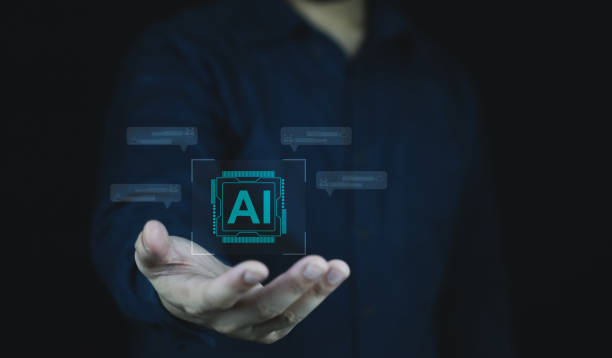
The operation of an AI assistant is based on a combination of advanced artificial intelligence technologies.
The core of this operation involves several key stages.
First, the user’s input – which is usually voice – is converted into text by an Automatic Speech Recognition (ASR) system.
This stage is crucial because the accuracy of speech-to-text conversion provides the foundation for understanding subsequent commands.
After conversion to text, it’s time for the Natural Language Processing (NLP) stage.
In this stage, the assistant tries to understand the meaning of sentences, determine the user’s intent, and extract key entities (such as time, place, names).
For example, if the user says “How’s the weather tomorrow?”, NLP must identify the word “tomorrow” as time and “How’s the weather” as a weather forecast request.
Then, the system uses #machine_learning algorithms and vast databases to find the best answer or perform the appropriate action.
This might involve searching the internet, accessing the user’s personal information (with their permission), or interacting with other applications.
Finally, using Natural Language Generation (NLG) or Text-to-Speech (TTS) systems, the response is provided to the user.
This complex and analytical process is performed in a fraction of a second, resulting in a smooth and natural interaction with a conversational AI.
Don’t have a corporate website yet and missing out on online opportunities? With professional corporate website design by Rasawweb,
✅ Double your business credibility
✅ Attract new customers
⚡ Free consultation for your corporate website!
Benefits of Using AI Assistants
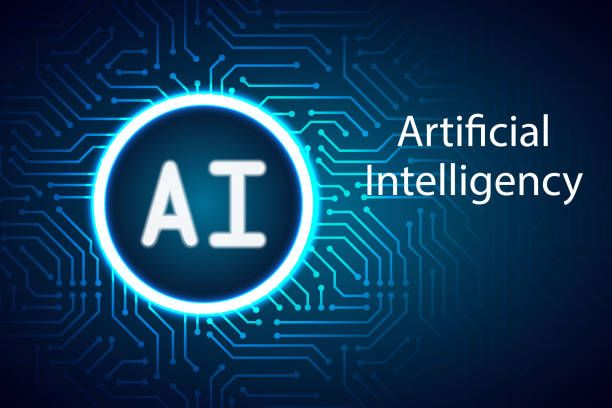
Utilizing an AI assistant has brought significant benefits to users in their personal and professional lives.
One of the most prominent benefits is a significant increase in productivity and efficiency.
These assistants can automatically perform tasks such as calendar scheduling, sending messages, making calls, or searching for information, thereby freeing up the user’s time and energy for more important activities.
Convenience and easy access are also key advantages; with just a voice or text command, a wide range of information and services can be accessed, even when hands are busy or a screen is unavailable.
This provides new possibilities, especially for older adults or those with physical limitations, offering a form of digital guidance.
Smart assistants can also offer a personalized experience; by learning from user patterns and preferences, they can provide more relevant and accurate suggestions.
For example, an assistant might learn your music habits over time and suggest your favorite playlists.
In a business environment, these assistants help improve customer service, automate support processes, and reduce employee workload.
These benefits not only lead to time and cost savings but also significantly improve the user experience.
Challenges and Concerns Surrounding AI Assistants
![]()
Despite numerous benefits, the development and use of AI assistants also come with several challenges and concerns that must be carefully considered.
One of the biggest concerns relates to #privacy and #data_security.
Smart assistants require access to a large volume of personal information for effective operation, including conversations, locations, and behavioral patterns.
This raises serious questions about how companies collect, store, and use this data.
There is always a risk of data breaches or misuse of personal information, which can lead to questionable content regarding user rights.
Another challenge is the issue of #bias or #prejudice in AI algorithms.
If the training data on which assistants are trained contains social or cultural biases, the assistant may also provide biased responses or decisions.
This issue can exacerbate existing inequalities.
Furthermore, over-reliance on these assistants can lead to a reduction in human cognitive skills or job displacement.
Finally, ethical issues related to AI autonomy and accountability for their performance are also important topics that society and lawmakers must address.
Addressing these challenges requires collaboration among researchers, developers, lawmakers, and users to ensure that this technology is developed for the benefit of humanity.
AI Assistants in Education and Learning
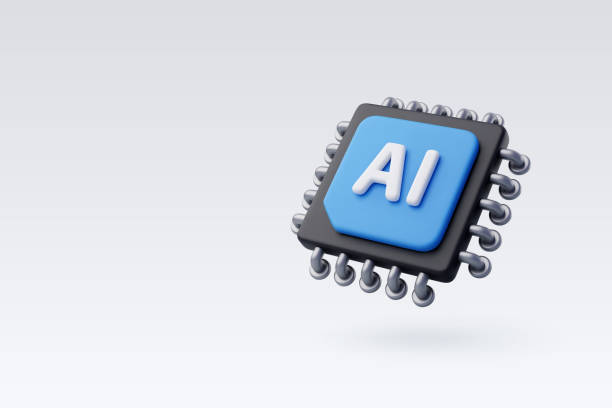
The field of #education and #learning is one area where AI assistants can be transformative.
This technology can not only personalize the learning process but also offer significant help to students and teachers.
An AI assistant can act as a virtual private tutor, answer students’ questions anytime and anywhere, and explain complex concepts in simple language.
This capability is invaluable for students who struggle with specific concepts, as they can ask questions without embarrassment or fear of judgment.
Furthermore, by analyzing student performance, assistants can identify their strengths and weaknesses and suggest educational content tailored to their individual needs.
This fully personalized educational approach allows each student to progress at a pace and method that suits them.
For teachers, smart assistants can help with administrative and routine tasks such as grading papers, managing classes, and tracking student progress, freeing up more time for meaningful interactions with students.
In language learning, these assistants can act as conversation partners and provide instant feedback on pronunciation and grammar.
These applications significantly demonstrate the potential of AI assistants in creating a more dynamic and efficient learning environment.
The table below shows some key benefits of AI assistants in education:
| Educational Aspect | Role of AI Assistant | Impact |
|---|---|---|
| Personalized Learning | Adapting content and pace to individual student needs | Increased engagement and comprehension |
| 24/7 Support | Answering questions and providing assistance at any time | Reduced learning barriers and increased access to resources |
| Teacher Assistance | Automating routine and administrative tasks | More time for focusing on teaching and interaction |
Smart Assistants in the Business Environment
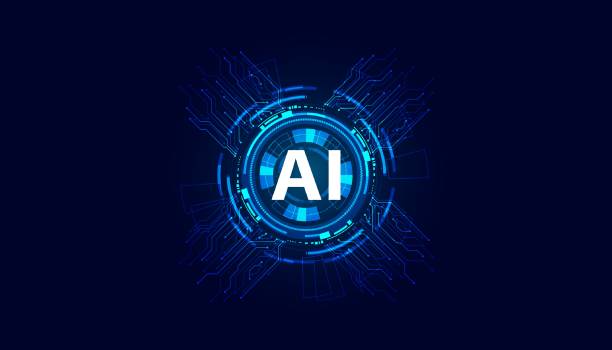
The presence of AI assistants in business environments is rapidly expanding, and companies across various industries are using these smart tools to improve efficiency, reduce costs, and enhance customer experience.
One of the most important applications is in the customer service sector; chatbots and voice assistants can answer frequently asked customer questions 24/7, resolve common issues, and even guide purchasing processes.
This not only increases customer satisfaction but also significantly reduces the workload of support teams.
In marketing, smart assistants help collect and analyze customer data so that companies can run more personalized and targeted campaigns.
In human resources, these assistants can help with the recruitment process, answer employee questions about benefits, and manage internal training.
In operations management, assistants can automate routine and repetitive tasks such as data entry, scheduling meetings, and inventory management.
This level of automation allows companies to focus their resources on more strategic and innovative tasks.
Overall, AI assistants not only help businesses save time and money but also assist them in competing in today’s complex markets by providing data-driven insights and improving decision-making.
Are you worried your company’s old website is driving away new customers? Rasawweb solves this problem with modern and efficient corporate website design.
✅ Increases your brand credibility.
✅ Helps attract targeted customers.
⚡ Contact Rasawweb for a free consultation!
The Future of AI Assistants and Innovations
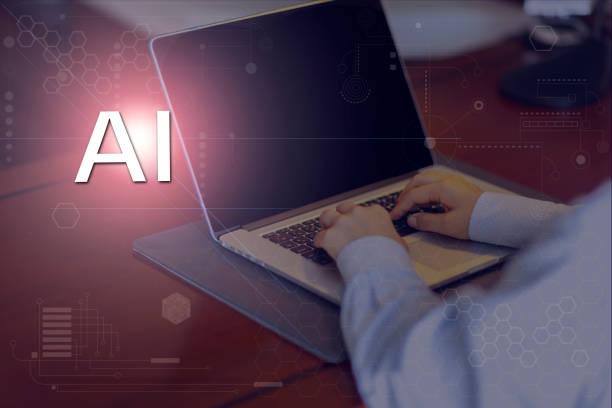
The future of AI assistants is full of exciting potentials and cutting-edge innovations that will go beyond their current capabilities.
One of the main development paths is enhancing their ability to understand #natural_language and #human_emotions.
Future assistants will be able to not only understand words but also use tone of voice, facial expressions (if visual input is available), and even interaction history to detect user emotions and provide more appropriate responses.
This is particularly important for #customer_service and psychological support applications.
Deeper integration with the #Internet_of_Things (IoT) and smart environments will also be another trend.
Smart assistants in the future will be able to automatically adjust your home or workplace settings based on your preferences and behavioral patterns, for instance, regulating temperature, lighting, or playing music.
The development of multimodal assistants that can receive and process information through voice, text, image, and even gestures will significantly improve the user experience.
From an entertainment perspective, these assistants may be able to generate personalized stories, play interactive games with users, and even express their artistic creativity.
Predictive AI will enable assistants to anticipate your needs before you articulate them and take proactive actions.
These advancements signify a future where conversational AI will become increasingly smarter, more intuitive, and more ubiquitous.
AI Assistants and Human Interaction

The emergence and evolution of AI assistants have fundamentally transformed how humans interact with technology.
In the past, to communicate with devices, humans had to learn their language (such as coding commands or complex user interfaces); but now, it is the technology that learns and understands human language.
This paradigm shift has made technology more accessible and user-friendly.
Interacting with an AI assistant, which is somewhat akin to conversing with a human, blurs the line between the physical and digital worlds, offering a more natural and fluid experience.
These assistants have not only become tools for performing tasks but, in some cases, have also transformed into “digital companions” that can answer our questions, entertain us, and even listen to our concerns at times.
This level of #empathy and #emotional_understanding, which is under development, deepens the interaction.
However, this transformation also brings challenges, including the risk of over-reliance on technology and a reduction in face-to-face human interactions.
It is important that the smart tool acts as a complement to humans, not a replacement.
The future of human-AI assistant interaction is moving towards a synergistic collaboration, where AI, as an intelligent partner, augments human capabilities and not only facilitates task completion but also assists us in creativity and solving more complex problems.
This technology is a major step in the evolution of the human relationship with the digital world.
Frequently Asked Questions
| Number | Question | Answer |
|---|---|---|
| 1 | What is an AI assistant? | An AI assistant is a software program that uses artificial intelligence to help users perform various tasks, provide information, or automate processes. |
| 2 | What are some examples of AI assistants? | Well-known examples include Siri, Google Assistant, Alexa, and Cortana. |
| 3 | How does an AI assistant work? | AI assistants typically use Natural Language Processing (NLP) to understand user voice or text commands and machine learning to improve their performance. |
| 4 | What capabilities does it have? | Capabilities such as answering questions, setting reminders, playing music, sending messages, controlling smart devices, and providing weather information. |
| 5 | How is data security handled in AI assistants? | Data security is a major concern. Companies strive to protect user data using encryption and privacy policies, but users should always be aware of potential risks. |
| 6 | Can AI assistants understand emotions? | Currently, AI assistants cannot understand true emotions, but they can detect tone and words related to emotions and provide appropriate responses. |
| 7 | What are the applications of AI assistants in the workplace? | In the workplace, they can be used for scheduling meetings, managing emails, searching for information, and even assisting with drafting documents. |
| 8 | What will be the future of AI assistants? | In the future, they are expected to be smarter, more personalized, and have more capabilities, actively anticipating user needs and even assisting with complex decision-making. |
| 9 | What is the difference between an AI assistant and a chatbot? | An AI assistant typically has a broader range of capabilities and interactions (often voice-based), whereas chatbots are usually focused on specific tasks within a text-based platform. |
| 10 | How can one best utilize an AI assistant? | To optimize usage, one should become familiar with its voice commands and capabilities, synchronize it with other devices, and allow it to learn your usage patterns through interactions. |
And other advertising services from Rasawweb Advertising Agency:
Smart Brand Identity: A new service for increasing campaign management through user experience customization.
Smart Social Media: Revolutionize click-through rates with marketing automation.
Smart Advertorials: An effective tool for digital branding by optimizing key pages.
Smart UI/UX: A professional solution for increasing sales focusing on attractive user interface design.
Smart Link Building: Professional optimization to increase website traffic by precisely targeting audiences.
And over a hundred other services in online advertising, advertising consulting, and organizational solutions.
Internet Advertising | Advertising Strategy | Advertorials
Sources
Future of AI AssistantsHuman and AI InteractionInnovation in Technology and InteractionAI and the Future
? Ready to revolutionize your business in the digital world? Rasawweb Afarin Digital Marketing Agency, specializing in SEO, content marketing, and corporate website design, is your reliable partner on the path to growth and success.
📍 Tehran, Mirdamad Street, next to Central Bank, Southern Kazeroun Alley, Ramin Alley, No. 6

